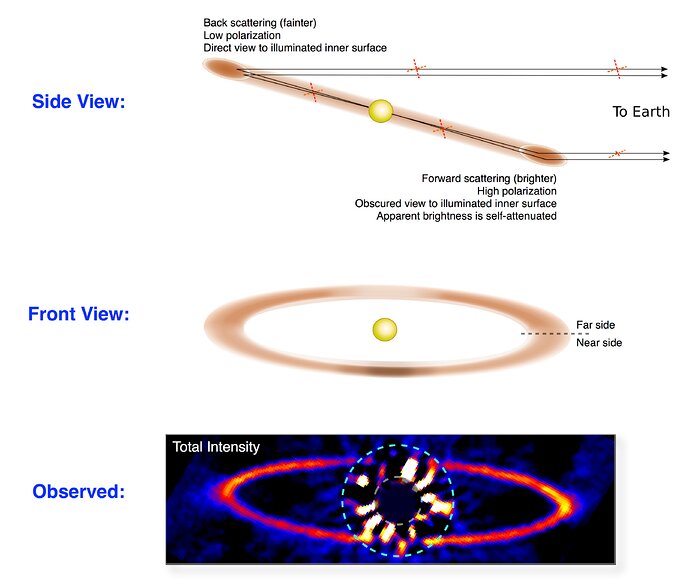The Gemini planet imager produces stunning observations in its first year
Diagram depicting the GPI team's revised model for the orientation and composition of the HR 4796A ring. To explain the observed polarization levels, the disk must consist of relatively large (> 5 µm) silicate dust particles, which scatter light most strongly and polarize it more for forward scattering. To explain the relative faintness of the east side in total intensity, the disk must be dense enough to be slightly opaque, comparable to Saturn’s optically thick rings, such that on the near side of the disk our view of its brightly illuminated inner portion is partially obscured. This revised model requires the disk to be much narrower and flatter than expected, and poses a new challenge for theories of disk dynamics to explain. GPI’s high contrast imaging and polarimetry capabilities together were essential for this new synthesis.
Credit:Marshall Perrin (Space Telescope Science Institute).
About the Image
| Id: | gemini1501d |
| Type: | Collage |
| Release date: | Jan. 6, 2015 |
| Related releases: | gemini1501 |
| Size: | 3267 x 2741 px |
About the Object
| Category: | Exoplanets |
